CHEMICAL IDENTIFICATION
-
RTECS NUMBER :
-
DU8050000
-
CHEMICAL NAME :
-
Biphenyl
-
CAS REGISTRY NUMBER :
-
92-52-4
-
LAST UPDATED :
-
199806
-
DATA ITEMS CITED :
-
64
-
MOLECULAR FORMULA :
-
C12-H10
-
MOLECULAR WEIGHT :
-
154.22
-
WISWESSER LINE NOTATION :
-
RR
HEALTH HAZARD DATA
ACUTE TOXICITY DATA
-
TYPE OF TEST :
-
Standard Draize test
-
ROUTE OF EXPOSURE :
-
Administration onto the skin
-
SPECIES OBSERVED :
-
Rodent - rabbit
-
TYPE OF TEST :
-
Standard Draize test
-
ROUTE OF EXPOSURE :
-
Administration into the eye
-
SPECIES OBSERVED :
-
Rodent - rabbit
-
REFERENCE :
-
MONS** Monsanto Co. Toxicity Information. (Monsanto Industrial Chemicals Co., Bancroft Bldg., Suite 204, 3411 Silverside Rd., Wilmington, DE 19810) ** ACUTE TOXICITY DATA **
-
TYPE OF TEST :
-
TCLo - Lowest published toxic concentration
-
ROUTE OF EXPOSURE :
-
Inhalation
-
SPECIES OBSERVED :
-
Human
-
DOSE/DURATION :
-
4400 ug/m3
-
TOXIC EFFECTS :
-
Peripheral Nerve and Sensation - flaccid paralysis without anesthesia (usually neuromuscular blockage) Gastrointestinal - nausea or vomiting Gastrointestinal - other changes
-
TYPE OF TEST :
-
LD50 - Lethal dose, 50 percent kill
-
ROUTE OF EXPOSURE :
-
Oral
-
SPECIES OBSERVED :
-
Rodent - rat
-
DOSE/DURATION :
-
2140 mg/kg
-
TOXIC EFFECTS :
-
Behavioral - somnolence (general depressed activity) Behavioral - muscle weakness Gastrointestinal - alteration in gastric secretion
-
TYPE OF TEST :
-
LC - Lethal concentration
-
ROUTE OF EXPOSURE :
-
Inhalation
-
SPECIES OBSERVED :
-
Rodent - rat
-
DOSE/DURATION :
-
>200 mg/m3
-
TOXIC EFFECTS :
-
Details of toxic effects not reported other than lethal dose value
-
REFERENCE :
-
MONS** Monsanto Co. Toxicity Information. (Monsanto Industrial Chemicals Co., Bancroft Bldg., Suite 204, 3411 Silverside Rd., Wilmington, DE 19810)
-
TYPE OF TEST :
-
LD50 - Lethal dose, 50 percent kill
-
ROUTE OF EXPOSURE :
-
Unreported
-
SPECIES OBSERVED :
-
Rodent - rat
-
DOSE/DURATION :
-
4500 mg/kg
-
TOXIC EFFECTS :
-
Details of toxic effects not reported other than lethal dose value
-
TYPE OF TEST :
-
LD50 - Lethal dose, 50 percent kill
-
ROUTE OF EXPOSURE :
-
Oral
-
SPECIES OBSERVED :
-
Rodent - mouse
-
DOSE/DURATION :
-
1900 mg/kg
-
TOXIC EFFECTS :
-
Behavioral - somnolence (general depressed activity) Gastrointestinal - hypermotility, diarrhea
-
TYPE OF TEST :
-
LD50 - Lethal dose, 50 percent kill
-
ROUTE OF EXPOSURE :
-
Intravenous
-
SPECIES OBSERVED :
-
Rodent - mouse
-
DOSE/DURATION :
-
56 mg/kg
-
TOXIC EFFECTS :
-
Details of toxic effects not reported other than lethal dose value
-
TYPE OF TEST :
-
LD50 - Lethal dose, 50 percent kill
-
ROUTE OF EXPOSURE :
-
Oral
-
SPECIES OBSERVED :
-
Mammal - cat
-
DOSE/DURATION :
-
>2600 mg/kg
-
TOXIC EFFECTS :
-
Details of toxic effects not reported other than lethal dose value
-
TYPE OF TEST :
-
LD50 - Lethal dose, 50 percent kill
-
ROUTE OF EXPOSURE :
-
Oral
-
SPECIES OBSERVED :
-
Rodent - rabbit
-
DOSE/DURATION :
-
2400 mg/kg
-
TOXIC EFFECTS :
-
Details of toxic effects not reported other than lethal dose value
-
TYPE OF TEST :
-
LD50 - Lethal dose, 50 percent kill
-
ROUTE OF EXPOSURE :
-
Administration onto the skin
-
SPECIES OBSERVED :
-
Rodent - rabbit
-
DOSE/DURATION :
-
>5010 mg/kg
-
TOXIC EFFECTS :
-
Details of toxic effects not reported other than lethal dose value
-
REFERENCE :
-
MONS** Monsanto Co. Toxicity Information. (Monsanto Industrial Chemicals Co., Bancroft Bldg., Suite 204, 3411 Silverside Rd., Wilmington, DE 19810) ** OTHER MULTIPLE DOSE TOXICITY DATA **
-
TYPE OF TEST :
-
TDLo - Lowest published toxic dose
-
ROUTE OF EXPOSURE :
-
Oral
-
SPECIES OBSERVED :
-
Rodent - rat
-
DOSE/DURATION :
-
3300 mg/kg/15D-I
-
TOXIC EFFECTS :
-
Kidney, Ureter, Bladder - changes in bladder weight Blood - changes in serum composition (e.g. TP, bilirubin, cholesterol) Biochemical - Enzyme inhibition, induction, or change in blood or tissue levels - phosphatases
-
TYPE OF TEST :
-
TDLo - Lowest published toxic dose
-
ROUTE OF EXPOSURE :
-
Oral
-
SPECIES OBSERVED :
-
Rodent - rat
-
DOSE/DURATION :
-
41250 mg/kg/24W-C
-
TOXIC EFFECTS :
-
Kidney, Ureter, Bladder - changes in tubules (including acute renal failure, acute tubular necrosis) Kidney, Ureter, Bladder - urine volume increased
-
TYPE OF TEST :
-
TCLo - Lowest published toxic concentration
-
ROUTE OF EXPOSURE :
-
Inhalation
-
SPECIES OBSERVED :
-
Rodent - rat
-
DOSE/DURATION :
-
300 mg/m3/7H/94D-I
-
TOXIC EFFECTS :
-
Sense Organs and Special Senses (Olfaction) - effect, not otherwise specified Lungs, Thorax, or Respiration - emphysema Related to Chronic Data - death
-
TYPE OF TEST :
-
TDLo - Lowest published toxic dose
-
ROUTE OF EXPOSURE :
-
Intraperitoneal
-
SPECIES OBSERVED :
-
Rodent - rat
-
DOSE/DURATION :
-
150 mg/kg/3D-I
-
TOXIC EFFECTS :
-
Biochemical - Enzyme inhibition, induction, or change in blood or tissue levels - other Enzymes
-
TYPE OF TEST :
-
TCLo - Lowest published toxic concentration
-
ROUTE OF EXPOSURE :
-
Inhalation
-
SPECIES OBSERVED :
-
Rodent - mouse
-
DOSE/DURATION :
-
5 mg/m3/7H/92D-I
-
TOXIC EFFECTS :
-
Lungs, Thorax, or Respiration - emphysema Lungs, Thorax, or Respiration - chronic pulmonary edema Related to Chronic Data - death
-
TYPE OF TEST :
-
TDLo - Lowest published toxic dose
-
ROUTE OF EXPOSURE :
-
Oral
-
SPECIES OBSERVED :
-
Rodent - mouse
-
DOSE/DURATION :
-
56 gm/kg
-
TOXIC EFFECTS :
-
Tumorigenic - equivocal tumorigenic agent by RTECS criteria Lungs, Thorax, or Respiration - tumors Blood - tumors
-
TYPE OF TEST :
-
TDLo - Lowest published toxic dose
-
ROUTE OF EXPOSURE :
-
Subcutaneous
-
SPECIES OBSERVED :
-
Rodent - mouse
-
DOSE/DURATION :
-
46 mg/kg
-
TOXIC EFFECTS :
-
Tumorigenic - neoplastic by RTECS criteria Lungs, Thorax, or Respiration - tumors Liver - tumors
-
TYPE OF TEST :
-
Unscheduled DNA synthesis
-
TYPE OF TEST :
-
DNA damage
MUTATION DATA
-
TYPE OF TEST :
-
Sister chromatid exchange
-
TEST SYSTEM :
-
Rodent - hamster Fibroblast
-
REFERENCE :
-
JNCIAM Journal of the National Cancer Institute. (Washington, DC) V.1-60, 1940-78. For publisher information, see JJIND8. Volume(issue)/page/year: 58,1635,1977 *** REVIEWS *** ACGIH TLV-TWA 1.3 mg/m3 (0.2 ppm) DTLVS* The Threshold Limit Values (TLVs) and Biological Exposure Indices (BEIs) booklet issues by American Conference of Governmental Industrial Hygienists (ACGIH), Cincinnati, OH, 1996 Volume(issue)/page/year: TLV/BEI,1997 TOXICOLOGY REVIEW AJMEAZ American Journal of Medicine. (Technical Pub., 875 Third Ave., New York, NY 10022) V.1- 1946- Volume(issue)/page/year: 38,409,1965 *** U.S. STANDARDS AND REGULATIONS *** EPA FIFRA 1988 PESTICIDE SUBJECT TO REGISTRATION OR RE-REGISTRATION FEREAC Federal Register. (U.S. Government Printing Office, Supt. of Documents, Washington, DC 20402) V.1- 1936- Volume(issue)/page/year: 54,7740,1989 MSHA STANDARD-air:TWA 0.2 ppm (1 mg/m3) DTLVS* The Threshold Limit Values (TLVs) and Biological Exposure Indices (BEIs) booklet issues by American Conference of Governmental Industrial Hygienists (ACGIH), Cincinnati, OH, 1996 Volume(issue)/page/year: 3,94,1971 OSHA PEL (Gen Indu):8H TWA 0.2 ppm (1 mg/m3) CFRGBR Code of Federal Regulations. (U.S. Government Printing Office, Supt. of Documents, Washington, DC 20402) Volume(issue)/page/year: 29,1910.1000,1994 OSHA PEL (Construc):8H TWA 0.2 ppm (1 mg/m3) CFRGBR Code of Federal Regulations. (U.S. Government Printing Office, Supt. of Documents, Washington, DC 20402) Volume(issue)/page/year: 29,1926.55,1994 OSHA PEL (Shipyard):8H TWA 0.2 ppm (1 mg/m3) CFRGBR Code of Federal Regulations. (U.S. Government Printing Office, Supt. of Documents, Washington, DC 20402) Volume(issue)/page/year: 29,1915.1000,1993 OSHA PEL (Fed Cont):8H TWA 0.2 ppm (1 mg/m3) CFRGBR Code of Federal Regulations. (U.S. Government Printing Office, Supt. of Documents, Washington, DC 20402) Volume(issue)/page/year: 41,50-204.50,1994 *** OCCUPATIONAL EXPOSURE LIMITS *** OEL-ARAB Republic of Egypt:TWA 0.2 ppm (1 mg/m3) JAN 1993 OEL-AUSTRALIA:TWA 0.2 ppm (1.5 mg/m3) JAN 1993 OEL-AUSTRIA:TWA 0.2 ppm (1 mg/m3) JAN 1993 OEL-BELGIUM:TWA 0.2 ppm (1.3 mg/m3) JAN 1993 OEL-DENMARK:TWA 0.2 ppm (1 mg/m3) JAN 1993 OEL-FINLAND:TWA 0.2 ppm (1 mg/m3);STEL 0.6 ppm (3 mg/m3);Skin JAN 1993 OEL-FRANCE:TWA 0.2 ppm (1.5 mg/m3) JAN 1993 OEL-GERMANY:TWA 0.2 ppm (1 mg/m3) JAN 1993 OEL-HUNGARY:TWA 1 mg/m3;STEL 2 mg/m3;Skin JAN 1993 OEL-INDIA:TWA 0.2 ppm (1.5 mg/m3) JAN 1993 OEL-THE NETHERLANDS:TWA 0.2 ppm (1 mg/m3) JAN 1993 OEL-THE PHILIPPINES:TWA 0.2 ppm (1 mg/m3) JAN 1993 OEL-SWEDEN:TWA 0.2 ppm (1.3 mg/m3);STEL 0.4 ppm (2.5 mg/m3) JAN 1993 OEL-SWITZERLAND:TWA 0.2 ppm (1.3 mg/m3) JAN 1993 OEL-THAILAND:TWA 0.2 ppm (1 mg/m3) JAN 1993 OEL-UNITED KINGDOM:TWA 0.2 ppm (1.5 mg/m3);STEL 0.6 ppm JAN 1993 OEL IN BULGARIA, COLOMBIA, JORDAN, KOREA check ACGIH TLV OEL IN NEW ZEALAND, SINGAPORE, VIETNAM check ACGIH TLV *** NIOSH STANDARDS DEVELOPMENT AND SURVEILLANCE DATA *** NIOSH RECOMMENDED EXPOSURE LEVEL (REL) : NIOSH REL TO DIPHENYL-air:10H TWA 0.2 ppm REFERENCE : NIOSH* National Institute for Occupational Safety and Health, U.S. Dept. of Health, Education, and Welfare, Reports and Memoranda. Volume(issue)/page/year: DHHS #92-100,1992 NIOSH OCCUPATIONAL EXPOSURE SURVEY DATA : NOHS - National Occupational Hazard Survey (1974) NOHS Hazard Code - 27590 No. of Facilities: 281 (estimated) No. of Industries: 10 No. of Occupations: 29 No. of Employees: 10589 (estimated) NOES - National Occupational Exposure Survey (1983) NOES Hazard Code - 27590 No. of Facilities: 2220 (estimated) No. of Industries: 20 No. of Occupations: 36 No. of Employees: 32003 (estimated) No. of Female Employees: 3708 (estimated)
|
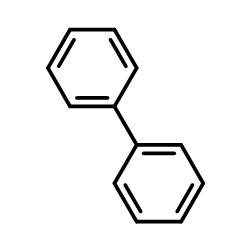




![2-[1,1-Biphenyl]-4-Yl-1-Ethanol structure](https://image.chemsrc.com/caspic/460/37729-18-3.png) CAS#:37729-18-3
CAS#:37729-18-3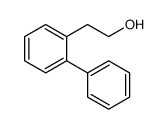 CAS#:111033-77-3
CAS#:111033-77-3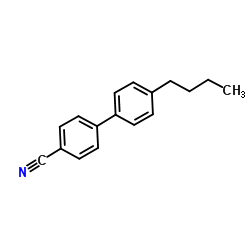 CAS#:52709-83-8
CAS#:52709-83-8 CAS#:47162-00-5
CAS#:47162-00-5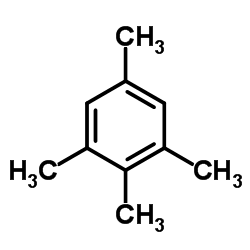 CAS#:527-53-7
CAS#:527-53-7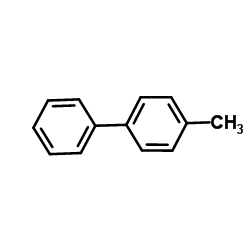 CAS#:644-08-6
CAS#:644-08-6 CAS#:643-58-3
CAS#:643-58-3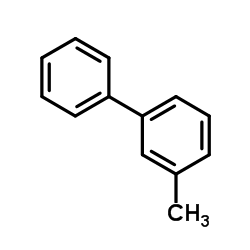 CAS#:643-93-6
CAS#:643-93-6![4'-tert-Butyl[1,1'-biphenyl]-4-carboxylic acid structure](https://image.chemsrc.com/caspic/073/5748-42-5.png) CAS#:5748-42-5
CAS#:5748-42-5![Methanone,bis([1,1'-biphenyl]-4-yl)- structure](https://image.chemsrc.com/caspic/073/3478-90-8.png) CAS#:3478-90-8
CAS#:3478-90-8
